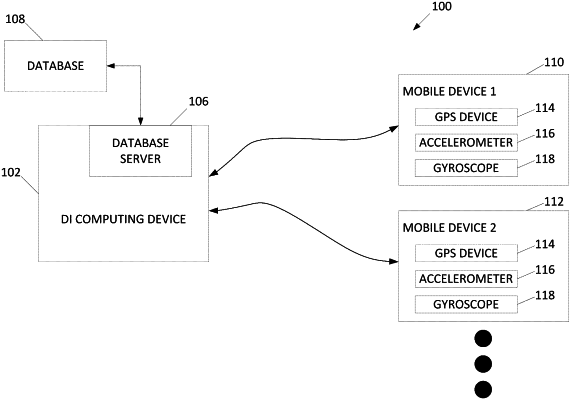| CPC H04W 4/029 (2018.02) [H04W 4/023 (2013.01); H04W 4/40 (2018.02)] | 20 Claims |

|
1. A computing device for driver identification, the computing device comprising one or more processors and configured to:
receive a first plurality of measurements collected by a first user device during a vehicle trip, each measurement of the first plurality of measurements including a first measured geographic location and first telematics data corresponding to the first measured geographic location;
receive a second plurality of measurements collected by a second user device during the vehicle trip, each measurement of the second plurality of measurements including a second measured geographic location and second telematics data corresponding to the second measured geographic location;
determine, using deep learning algorithms of a trained machine learning model, patterns in the first and the second telematics data by using pattern recognition;
determine relative positions of the first user device and the second user device in a vehicle using the patterns in the first and the second telematics data;
apply a filter to the first plurality of measurements and the second plurality of measurements to calculate respective geographic locations for the first user device and the second user device;
determine a distance vector between the first user device and the second user device based at least in part on the respective geographic locations;
determine a predicted position of the second user device relative to the first user device based on the relative positions, the respective geographic locations, and with respect to a forward direction of travel of the vehicle based at least in part upon the distance vector; and
identify that the first user device or the second user device corresponds to a user device associated with a driver of the vehicle based at least in part upon the predicted position of the second user device relative to the first user device.
|